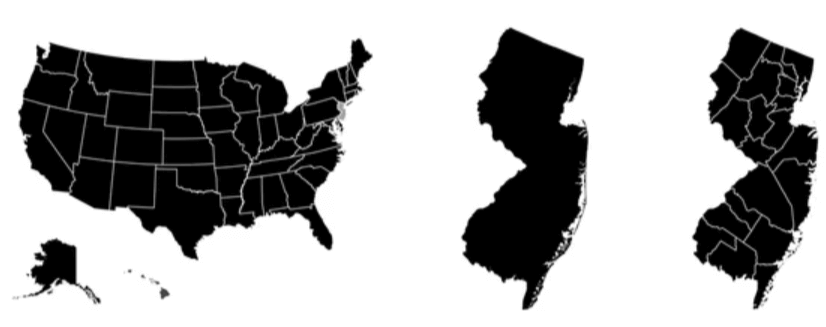
Outline:6zkdlqnt5lg= New Jersey Map
The Outline:6zkdlqnt5lg= New Jersey Map is an essential resource that encapsulates the state’s intricate geography, from its mountainous terrains to its coastal expanses. By examining key features such as legends and scale indicators, one can gain a deeper understanding of both navigation and the socio-economic landscape of the region. Additionally, identifying notable attractions provides a framework for exploring New Jersey’s diverse offerings. However, understanding how to effectively utilize this map can significantly enhance the experience—what strategies might be employed to maximize its potential?
Overview of New Jersey’s Geography
New Jersey, situated in the northeastern United States, exhibits a diverse geography characterized by its varied landscapes and strategic location.
The state’s terrain includes mountainous regions in the northwest, fertile valleys, and extensive coastal regions along the Atlantic Ocean.
This geographical diversity not only shapes the ecological systems but also influences human activities, economic development, and transportation networks throughout New Jersey.
Read Also Logo:9x9fa3prlxo= Taco Bell
Key Features of the Map
A comprehensive examination of New Jersey’s map reveals several key features that are critical for understanding both the state’s physical layout and its socio-economic dynamics.
Important map legends provide essential information regarding symbols and classifications, while scale indicators facilitate distance measurement and spatial relationships.
Together, these elements enhance the map’s utility, allowing users to navigate and comprehend the complex interconnections within New Jersey effectively.
Exploring New Jersey’s Attractions
Countless attractions in New Jersey showcase the state’s rich cultural heritage, diverse landscapes, and recreational opportunities.
Notable beach destinations such as Cape May and the Jersey Shore offer relaxation and vibrant boardwalks, while historical landmarks like Ellis Island and the Battlefields of Monmouth provide insights into America’s past.
Together, these sites highlight New Jersey’s unique blend of natural beauty and historical significance, appealing to a variety of visitors.
Tips for Using the Map
When navigating the diverse attractions of New Jersey, utilizing a well-structured map can significantly enhance the experience.
For effective map navigation, familiarize yourself with key landmarks and routes before embarking on your journey.
Prioritize travel planning by identifying must-see destinations and their proximity to one another, thereby optimizing your itinerary.
This strategic approach fosters a sense of freedom, allowing for spontaneous exploration.
Conclusion
In conclusion, the Outline:6zkdlqnt5lg= New Jersey Map serves as an essential resource for both residents and visitors, facilitating a comprehensive understanding of the state’s geographical and cultural landscape. For instance, a study of tourist patterns reveals that visitors to Cape May often utilize the map to navigate local attractions, such as the historic Cape May Lighthouse. This strategic use of the map highlights its role in enhancing the tourist experience and promoting the state’s rich historical and recreational offerings.




